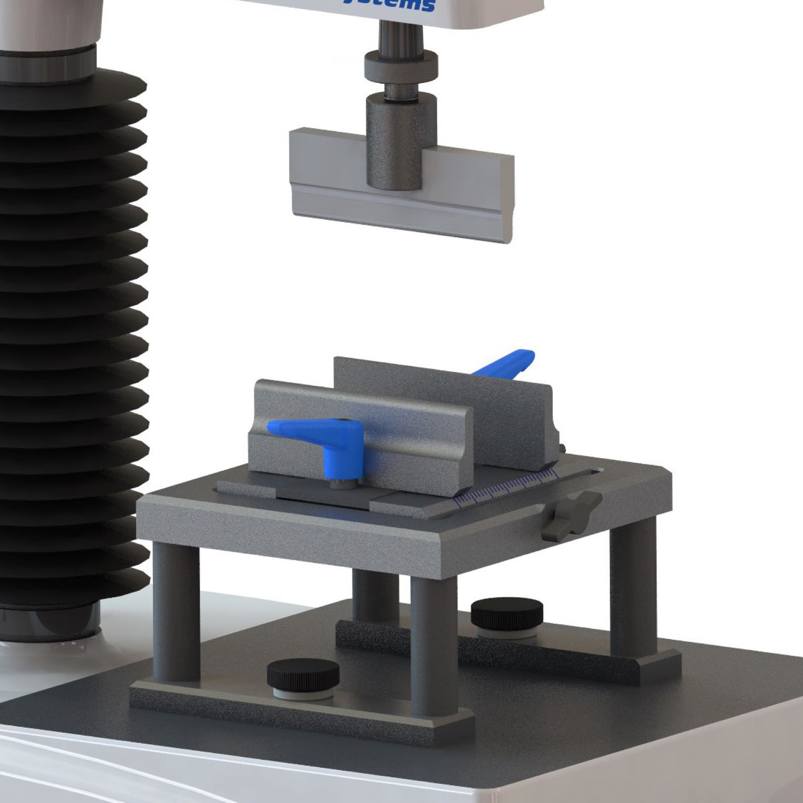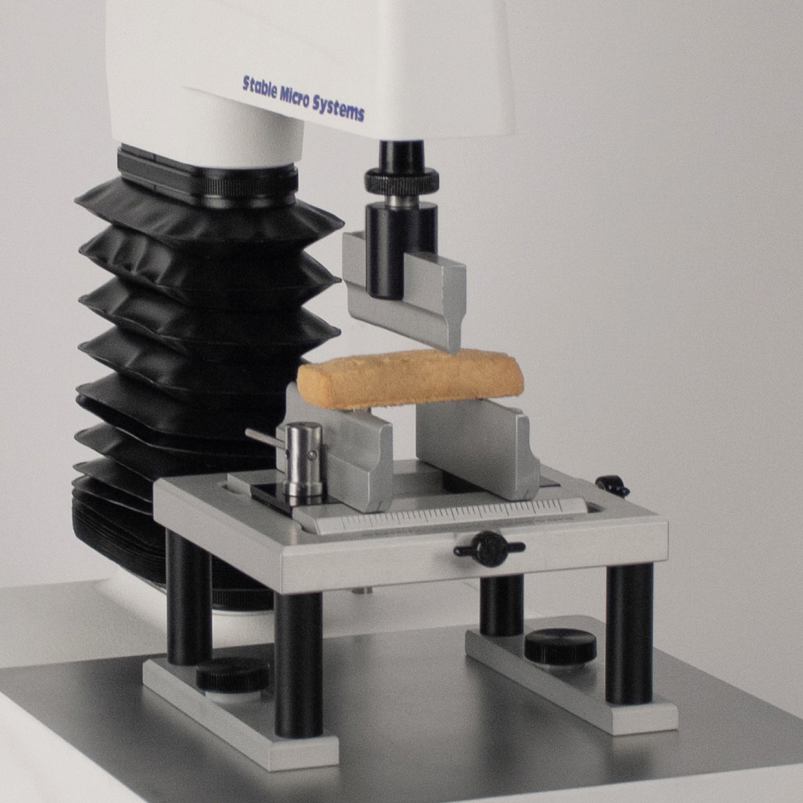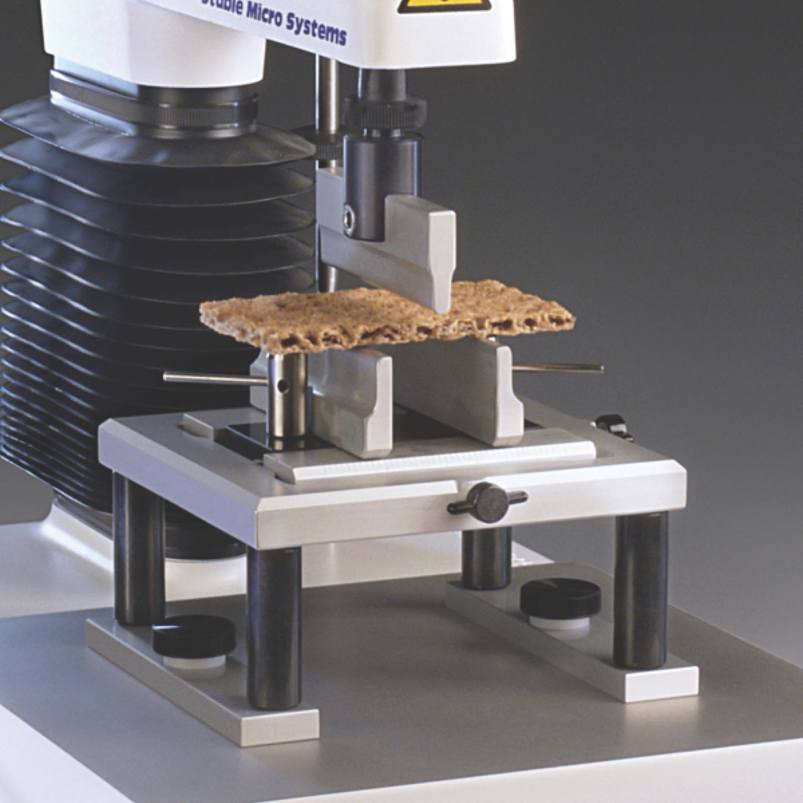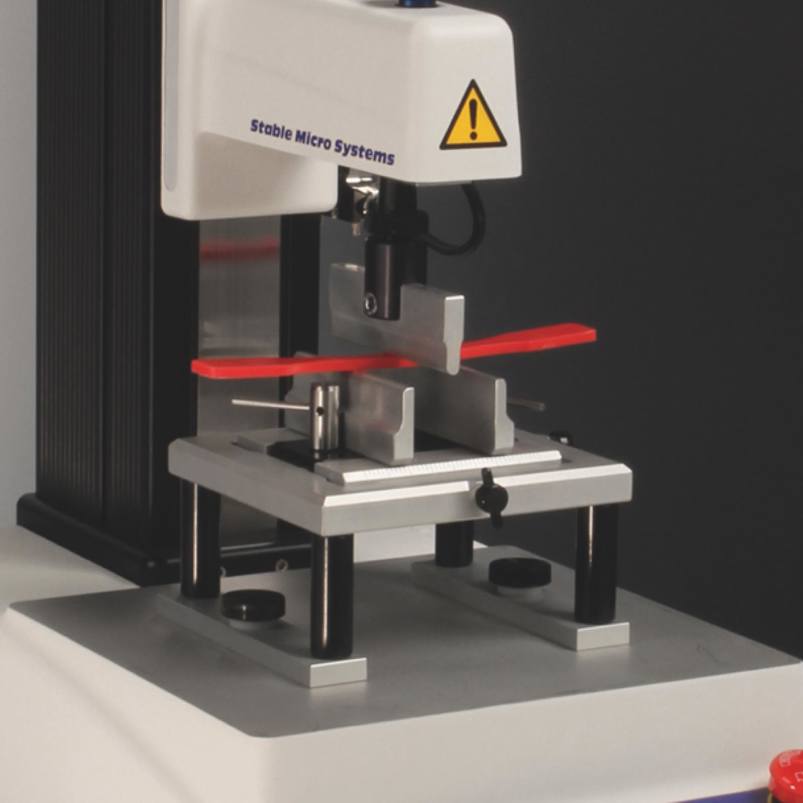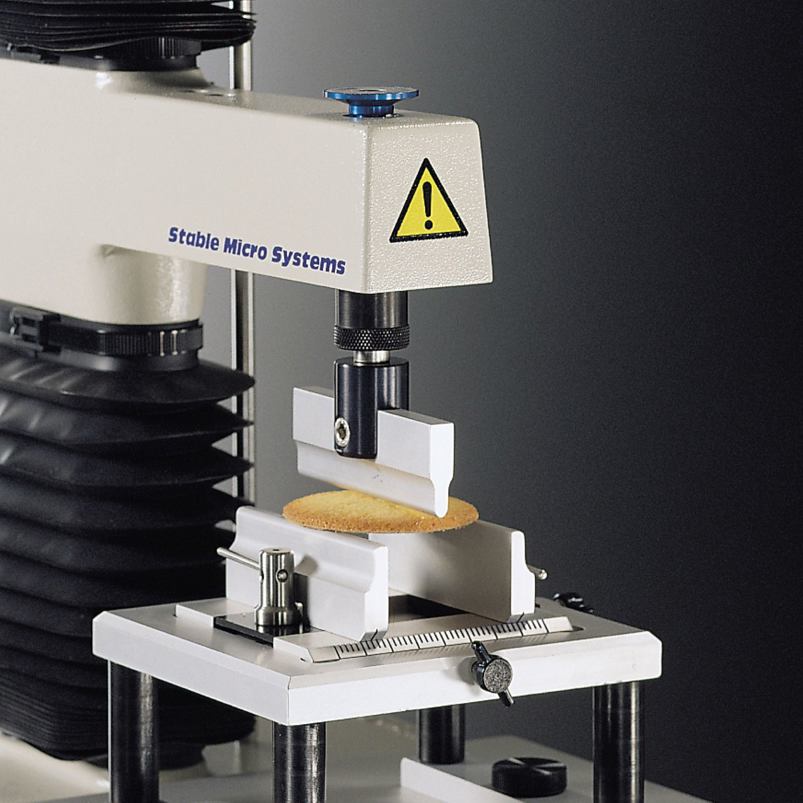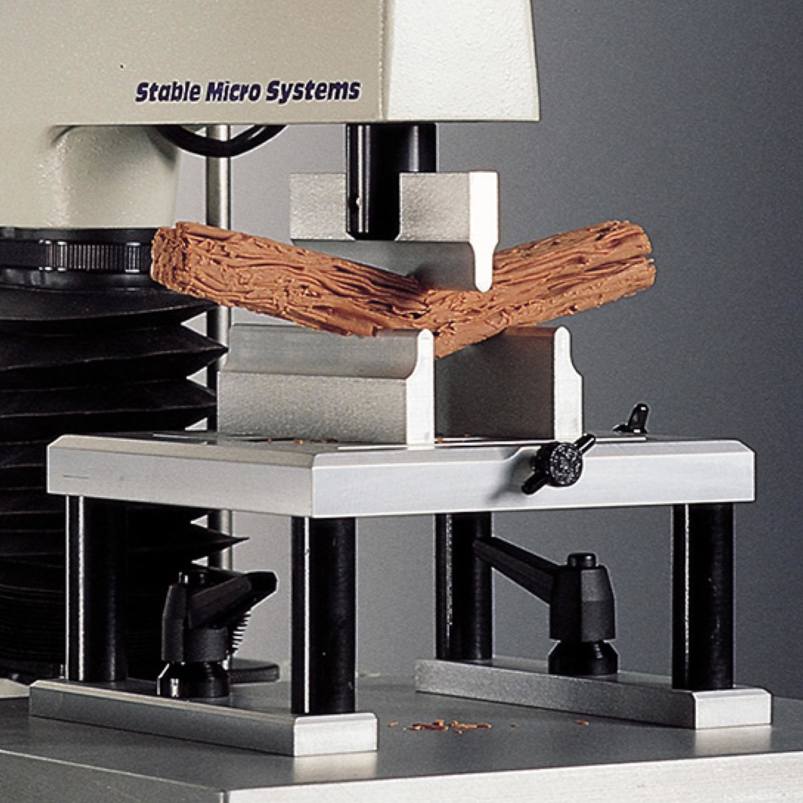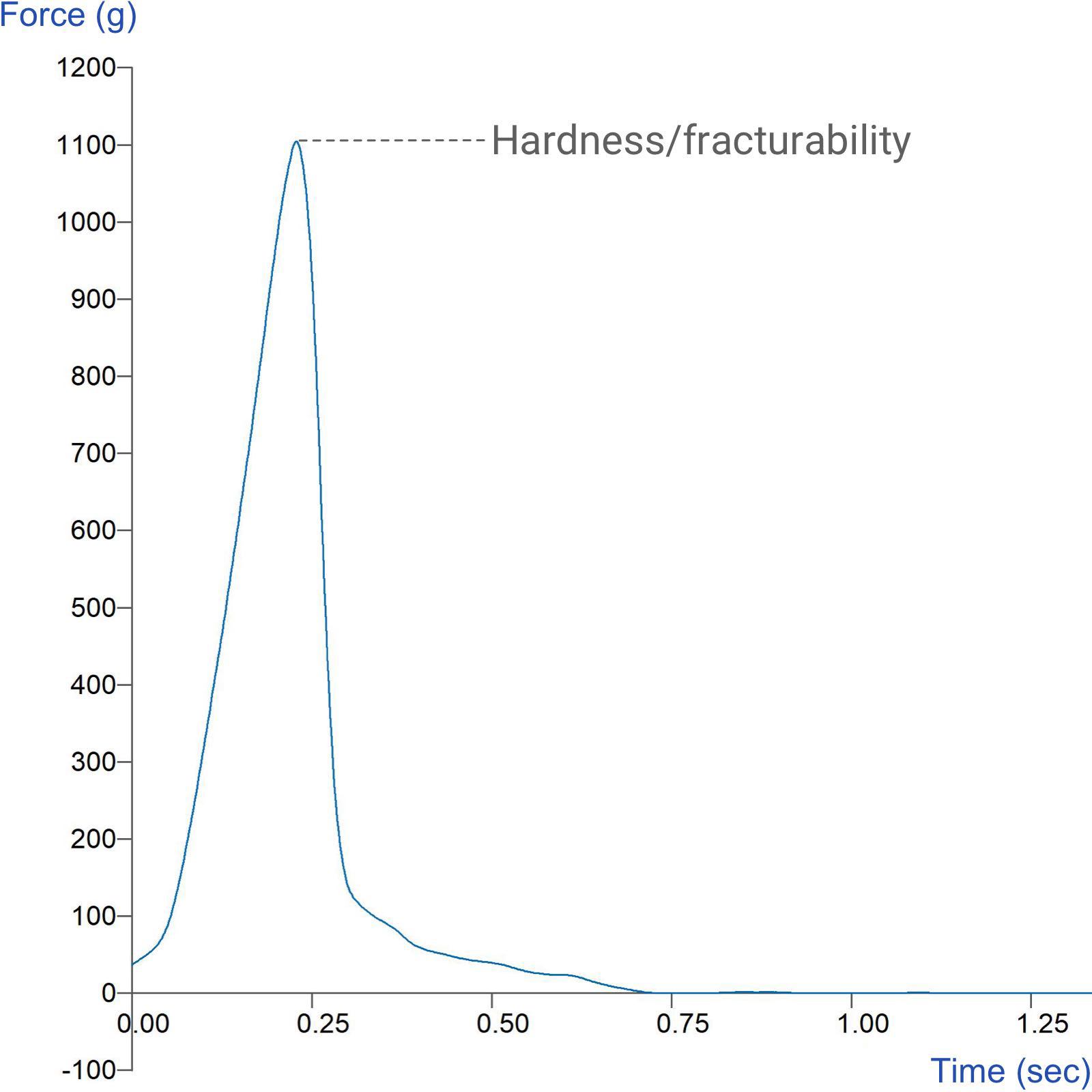Product overview
Breaking strength/stress of rigid samples can be determined by performing a three-point bend test. This attachment supports the sample across a span of known distance. A force is applied to the centre of the sample (which is also central to the supports) and the breaking stress is determined. Such a test may, for example, be used to assess the effect of different ingredients used, or to examine typical finished product problems such as moisture uptake.
The three-point bend rig, which provides a variable support gap of up to 60 mm and sample width up to 90mm, is located on the Heavy Duty Platform. A central beam/flexure unit is applied to the surface of the sample to provide the bending/snapping action.
The breaking strength (force per unit width) or breaking stress (force per unit area) of the sample is taken as the maximum strength or stress value of the curve. Other textural characteristics that may be of interest are the distance to break and the gradient of the slope during application of force. The distance to break gives an indication of the brittleness of the sample as this shows how far a sample can be deformed before fracture. The gradient of the slope indicates sample toughness; the higher the gradient, the tougher the sample.
Typical applications include measuring the break strength/fracturability of bread sticks, biscuits and chocolate bars. This rig also reveals the break point, demonstrating hardness and brittleness or flexibility of dog biscuits, liquorice and stiffness of e.g. polymer materials or dental archwires.
How does the Three Point Bend Rig work?
Ideal sample form
Solid materials which can be supported in order to be flexed centrally to break point
Benefits and limitations
- Supports 5mm wide
- Maximum sample support width 90mm
- Maximum gap between supports 60mm
- Minimum test distance between supports 10mm
Technical information
Installation
Full installation instructions are provided within the Education Zone of the latest Exponent/Connect software version and on the technical information sheet accompanying this product.
Chemical compatibility
Stable Micro Systems probes and attachments are commonly made from four materials: anodised aluminium (AA6082 T6), stainless steel (316 T), Delrin (acetyl copolymer) and Perspex (polycarbonate).
In general use, probes and attachments made from these materials will be suitable for testing food products and inert non-food materials.
The four materials listed above are not universally resistant to all types of chemicals and as such the compatibility of the probe/attachment material with the product (to be tested) must be established to prevent damage to the probes and attachments. If the compatibility of the product with the probe is unknown to the customer then the chemical information about the product (Material Safety Data Sheet or Product Data Sheet) should be submitted to Stable Micro Systems. Stable Micro Systems will then assess the suitability of the probe/attachment material for use with the product and advise accordingly. If this advice is not sought then Stable Micro Systems will not accept liability for probes/attachments damaged by chemical attack from the product being tested.
Cleaning and maintenance
All probes and attachments may be cleaned in warm (or hand hot) water using a mild detergent. A soft brush may be used but abrasive cleaning aids should be avoided. Stable Micro Systems products should not be microwaved or cleaned in a dishwasher.
Screw threads should be lightly lubricated after drying using a light lubricant, e.g. petroleum jelly, mineral oil. This will aid the fitting and unscrewing of the item. Each component of a probe or attachment should be wrapped separately when stored, to avoid scratching or chipping. This will safeguard against any unnecessary damage to the accessory.

